Climate change is not gender-blind, our response must not be either

On my recent visit to a char community in Gaibandha, I met a 13-year-old girl whose dream was to become a teacher, like her mother. She was preparing to get married. The river might take their house at any time, her family explained. Although the community would help them find a new homestead, as is customary, their prospects are far from certain. Finding a home where their daughter would be cared for during this crisis was paramount.
We nodded in acknowledgement of the reality of the situation. This was no surprise, even as the younger son of the family remained on course to continue his schooling. We also recognised a larger, more insidious truth: when disaster looms, consequences are not shared equally. In households where resources shrink, choices about whose schooling continues, who carries extra burdens, and whose health is prioritised are filtered through the biases that shape everyday life.
These are not abstract prejudices. According to the United Nations Development Programme (UNDP), over 99 percent of people in Bangladesh hold at least one bias against women, with around 69 percent believing that men make better political leaders. In times of crisis, such beliefs harden into outcomes. Girls are the first to be pulled out of school, assigned to care work, married early, or face greater threats to their security and well-being.
This is what makes climate change such an insidious threat. The cycles are changing: droughts deepen, rains grow more erratic, cyclones intensify, and both heat waves and cold waves press harder. The same logic that already governs who loses in an economic downturn or a natural disaster threatens to become a permanent condition of daily life.
In 2024, climate hazards disrupted schooling for up to 3.5 crore children across Bangladesh. Record heat forced nationwide school closures in April and May, with classrooms shuttered for weeks. Later in the year, floods and cyclones extended the disruption, with some districts losing nearly two months of teaching time. While any child who misses that much education risks falling behind, the chance of never returning is far greater for girls. Unicef notes that prolonged school closures increase the likelihood that girls will drop out permanently or be married off as families search for ways to cope.
The long-term effects of this educational disruption are profound. Every additional year of schooling for a girl is linked to delayed marriage, reduced risk of maternal mortality, improved child health, and higher family incomes. Bangladesh's progress in girls' education has been one of its most celebrated achievements over the last three decades, helping transform both economic and social outcomes. But climate change risks undoing these gains. A girl pulled out of school after a flood or cyclone rarely returns, and the setback ripples across her lifetime. It reduces her ability to earn, limits her agency within her household, and narrows the opportunities available to her children. The cost is borne not only by individual families but by the nation as a whole, undermining workforce potential and widening inequality at a time when resilience requires the opposite.
In the country's climate-vulnerable regions—erosion belts, saline coastlines, low-lying deltas—these dynamics are even starker. Here, lives are being reshaped by habitat loss, water scarcity, and failing harvests. When storms destroy crops or floods take homes, families make tough choices. Too often, daughters are the first to bear the brunt of them. Research from the International Rescue Committee (IRC) in coastal districts found a staggering 39 percent surge in child marriage following climate-induced disasters.
Crises also sharpen risks of sexual abuse and exploitation. Cyclone shelters and relief camps are often overcrowded and lack safe, segregated facilities, leaving women and girls vulnerable to harassment and assault. After Cyclone Amphan, humanitarian organisations recorded a steep rise in gender-based violence in affected areas. Adolescent girls described avoiding shelters altogether because they felt unsafe, even when their homes were uninhabitable. Lack of privacy in sleeping areas and toilets compounded risks.
Furthermore, studies in Bangladesh have found that gender-based violence often increases in the months following floods or cyclones as displacement and economic stress take hold. Families that lose income may marry off daughters early to reduce household burdens, or girls may be trafficked under the guise of employment opportunities. When schools close indefinitely, girls also lose one of their safest spaces: classrooms that provide structure, peer support, and oversight from teachers. With that protective environment gone, many become more vulnerable to harassment, abuse, and coercion within their communities.
Subsequently, climate change amplifies pre-existing vulnerabilities. A storm or flood does not create prejudice, but it magnifies its consequences. For girls, this often leads to shrinking their security, bodily autonomy, and future choices. The burdens of adaptation also fall heavily on the girl child. As wells dry up, it is often girls who walk farther for water. As homes need repair, they lose hours that should be spent in class. As climate change intensifies, so will these demands. In communities already guided by overt biases, adaptation that ignores gender risks locking inequality into the very systems meant to build resilience.
That is why climate adaptation in Bangladesh cannot be a financing and engineering exercise alone—it must be anchored in gender equity. Building embankments, raising roads, and reinforcing schools are vital, but unless these investments deliberately address the position of girls, they will not secure the future. Inclusion must be more than just a buzzword.
Bangladesh's Climate Change and Gender Action Plan acknowledges the need to integrate gender into climate responses, but recognition is not enough. To protect the next generation, adaptation funds must explicitly support programmes that keep girls in school, rebuild learning centres with climate-resilient design, and back local organisations working to make girls leaders in their communities. Safety, mobility, and participation must be built into adaptation by design, not treated as afterthoughts. Addressing sexual violence must be central to these efforts: shelters must be safe by design, survivors must have access to services, and protection protocols must be embedded in disaster planning.
Climate change is already reshaping lives in ways that will persist for generations. Unless adaptation sees the crisis through girls' eyes, it will not merely strain infrastructure, it will redraw the map of opportunity, narrowing futures for half our population and diminishing our future as a whole. Resilience must be built on justice. That means ensuring that when the next storm comes, girls must not be the ones to lose first—be it their voice, their choice, or their future.
Saba El Kabir is a sustainability practitioner. He can be reached at [email protected].
Views expressed in this article are the author's own.
Follow The Daily Star Opinion on Facebook for the latest opinions, commentaries and analyses by experts and professionals. To contribute your article or letter to The Daily Star Opinion, see our guidelines for submission.

 For all latest news, follow The Daily Star's Google News channel.
For all latest news, follow The Daily Star's Google News channel. 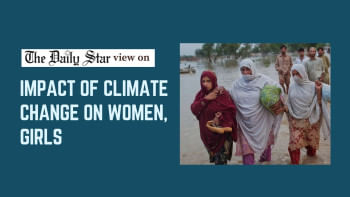
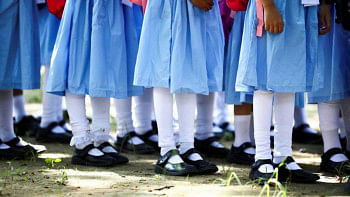
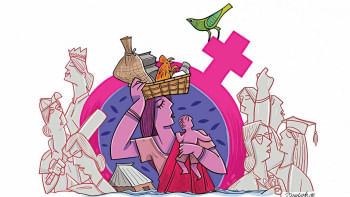



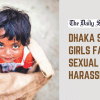
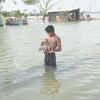




Comments